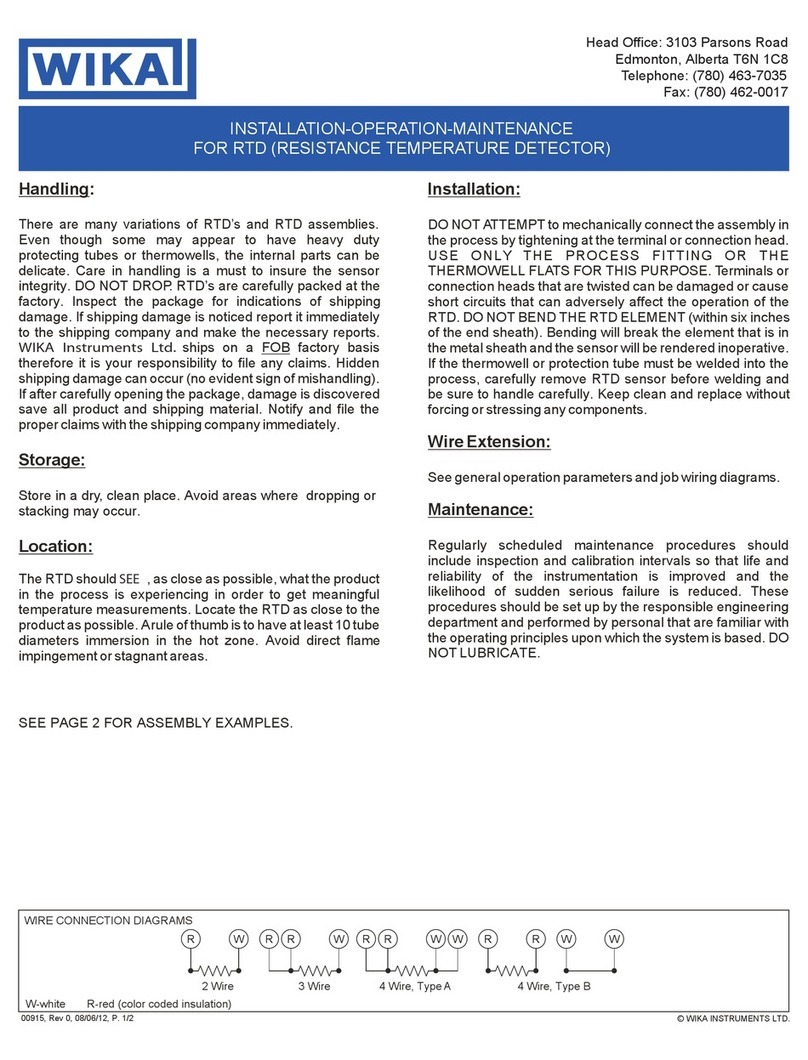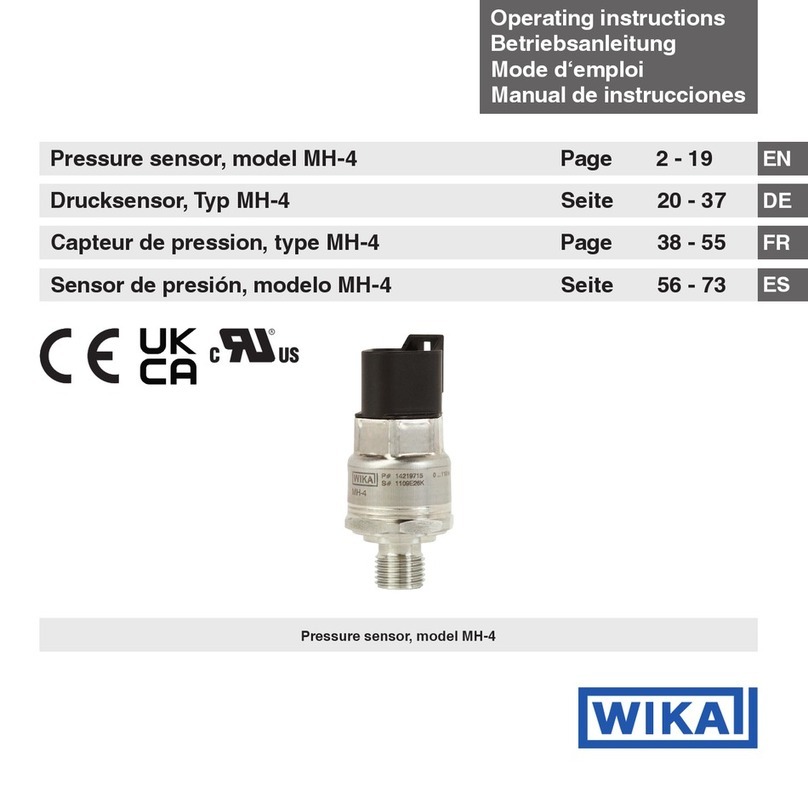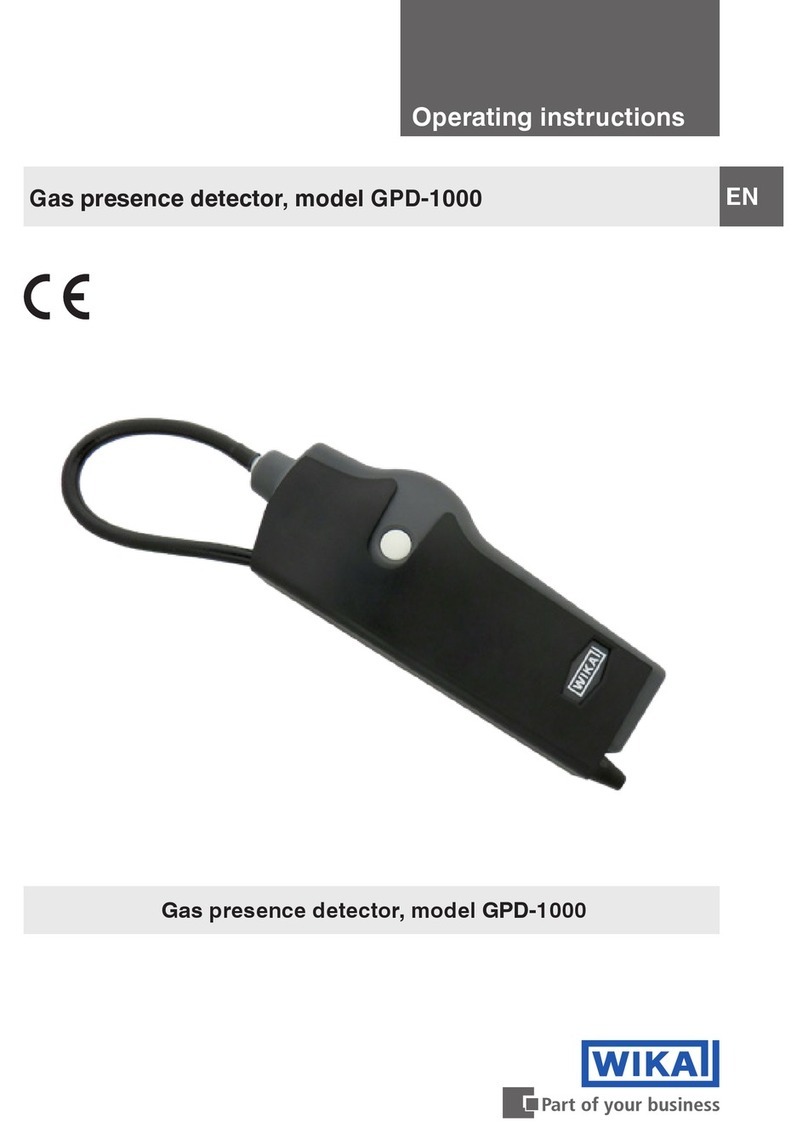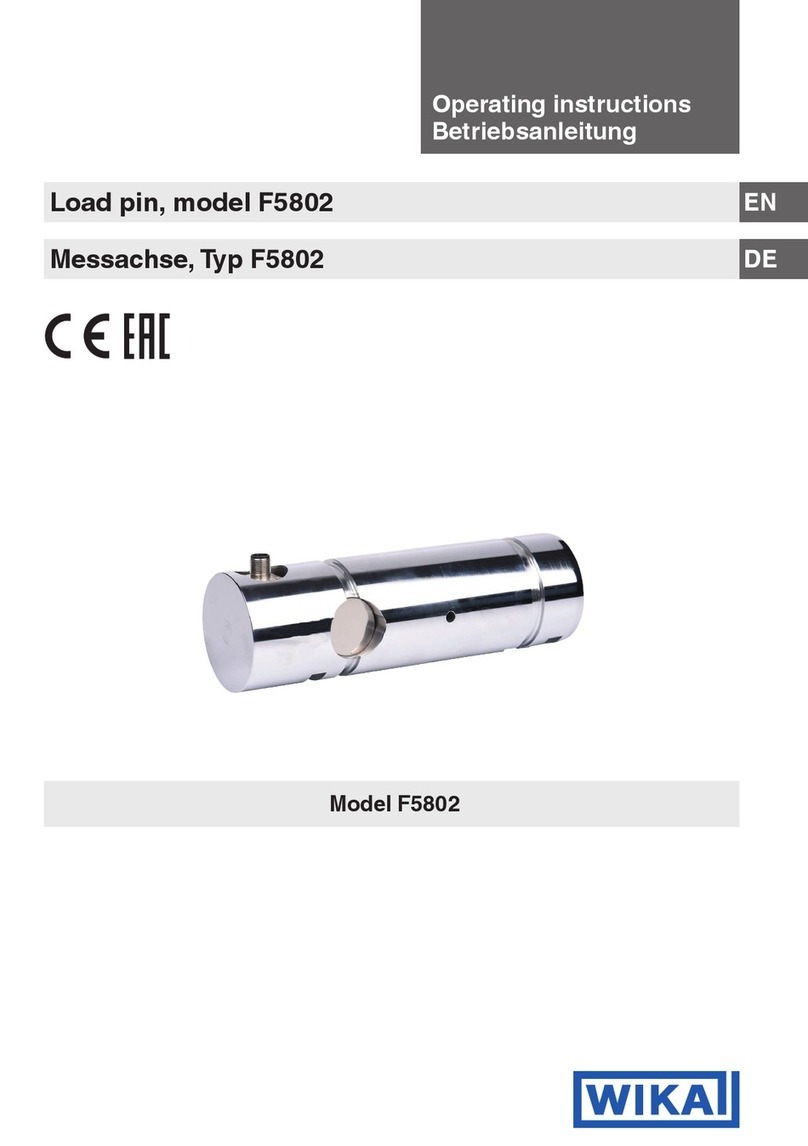
5WIKA operating instructions, models PEW-1000 and PEW-1200
14471927.03 07/2023 EN/DE/FR/ES
EN
The transmission of the measured pressure values to an IIoT platform is carried out at a preset sending interval.The
measurement and sending intervals, and also the alarm limits, for particular measured values can be congured over
the IIoT platform.
Using a mobile device with a local interface via Bluetooth® Low Energy, the instrument status (current measured value,
battery life, etc.) can also be queried on-site and the instrument can also be congured.
An update of the measured value only occurs in line with the set measuring rate! Until the next
measurement, the sensor transmits the last valid measured value.
2.3 Functional principle (model PEW-1000)
The model PEW-1000 uses the LoRaWAN® class A radio standard, which is designed for energy-saving operation.
The last registered measured value is, optionally, transmitted via Bluetooth®in “periodic advertising mode” at
an advertising interval of 1.25 s. The measuring rate can be dened independently of the transmission rate. The
model PEW-1200 can be congured such that, on triggering of an alarm, the measuring rate is changed, 4.5 “Alarm
description”.
→ For details on the Bluetooth® connection, see chapter 3.8.2 “Bluetooth®Low Energy” and the additional
documentation “Special documentation for BLE communication specications, models PEW-1000 and PEW-1200”.
→ For details on the LoRaWAN®, see: https://lora-alliance.org
→ For details on the LoRaWAN® communication protocol, see “Special documentation for LoRaWAN®communication
specications, model PEW-1000”
Examples for uplink contents:
■
Measured values
■
Notications for fault diagnosis
■
Alarm parameters
■
Conguration ID (for the identication of changes in the measuring and sending rate)
■
Battery charge status in V
Example for downlink contents:
Conguration change (e.g. measuring rate, sending rate, alarm parameter etc.), which can be recognised by the system.
2. Design and function































